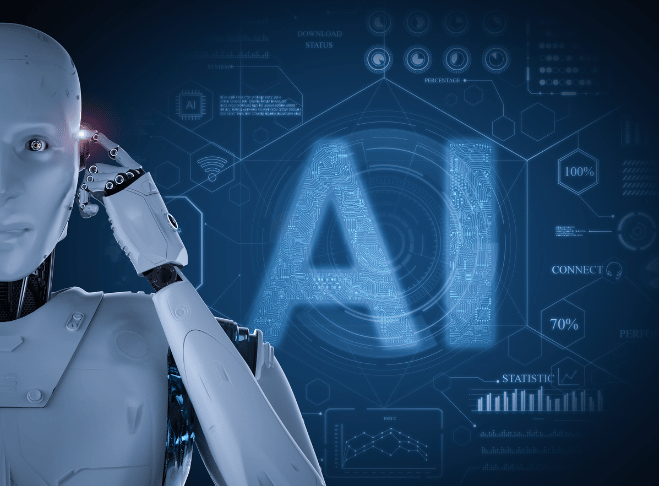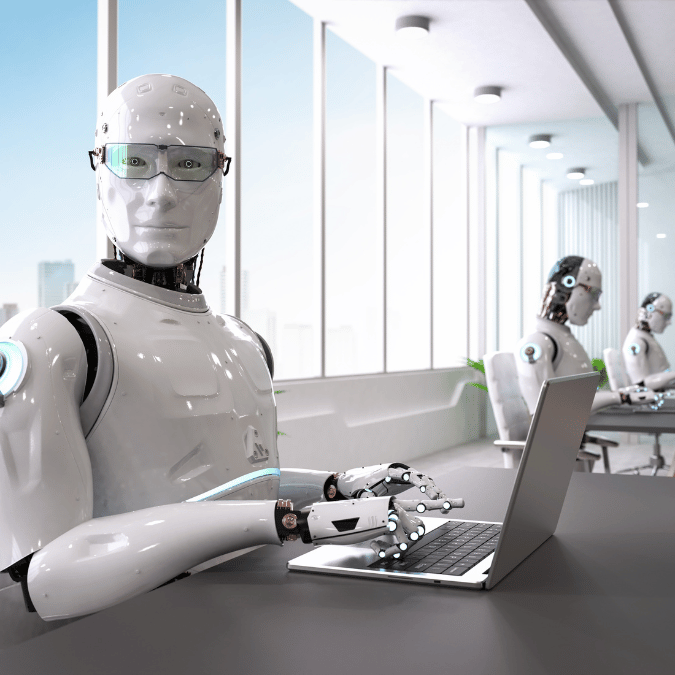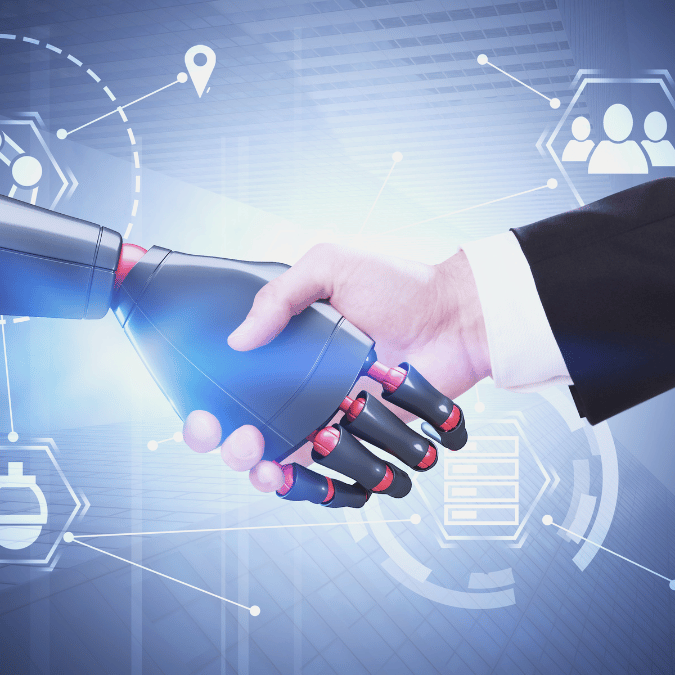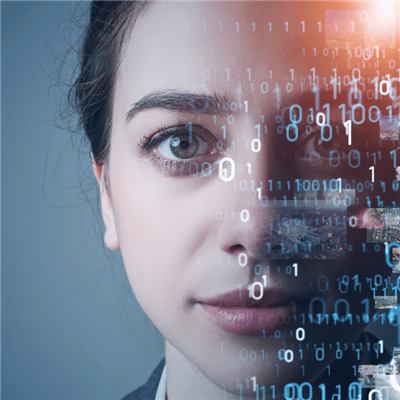AI-Generated Content Boon or Bane for Creativity
- Yves Jinishian
- 6/22/2023
 | The emergence of AI-Generated content has sparked both curiosity and concern. With AI systems becoming increasingly sophisticated, the question arises: is AI-generated content a boon or a bane for creativity? As businesses strive to captivate audiences and stand out from the competition, understanding the impact of AI on content creation is paramount. Transitioning into the era of AI-generated content is undeniably transformative. From generating articles and blog posts to composing music and even creating visual art, AI algorithms have exhibited remarkable capabilities. |
However, the notion of creativity, an essential aspect of content marketing, often raises eyebrows when AI enters the picture. Can machines truly emulate the human touch, imagination, and ingenuity that fuel creative endeavors? Or does the rise of AI threaten to stifle human creativity, relegating it to the background? To address these pressing questions, it is vital to explore the potential benefits and drawbacks of AI-generated content, acknowledging the role it plays in today's content landscape. By examining both the advantages and limitations, we can gain a deeper understanding of how AI and creativity intersect, and whether they can coexist harmoniously. In the following sections, we will delve into the boon and bane of AI-generated content, weighing the efficiencies and quality enhancements against the challenges and limitations. We will also explore how human creativity can find its place in this AI-driven world, fostering a symbiotic relationship between the capabilities of machines and the ingenuity of the human mind. | |
The Boom: Benfits of AI-Generated Content | |
AI-generated content brings forth a myriad of benefits that have revolutionized the way we approach content creation. By harnessing the power of advanced algorithms and machine learning, AI has the potential to amplify creativity and enhance productivity in remarkable ways. Let us delve into the tangible advantages that AI-generated content offers. |  |
First and foremost, AI enables unparalleled efficiency. With automated content generation, tasks that once consumed substantial amounts of time and resources can now be accomplished swiftly and effortlessly. AI algorithms can analyze vast amounts of data, extract valuable insights, and generate tailored content at a scale that would be impossible for humans alone. This efficiency empowers businesses to deliver content more rapidly, ensuring timely engagement with their target audience. Furthermore, AI-generated content often exhibits a high level of accuracy and precision. AI algorithms excel at parsing and analyzing data, enabling them to generate content that is data-driven and factually accurate. This is particularly beneficial in industries where accuracy is paramount, such as news reporting, scientific research, and technical writing. With AI, the risk of human error can be significantly reduced, ensuring content that is reliable and trustworthy. In addition to efficiency and accuracy, AI-generated content can also optimize personalization. By analyzing user behavior, preferences, and historical data, AI algorithms can create personalized content tailored to individual users. This level of personalization enhances user experience and engagement, as users receive content that aligns with their specific interests and needs. Through AI-generated content, businesses can cultivate stronger relationships with their audience by delivering precisely what they desire. Moreover, AI-driven content creation expands creative possibilities. AI algorithms can generate ideas, explore innovative concepts, and produce content that pushes the boundaries of imagination. By augmenting human creativity, AI serves as a catalyst for ideation and inspiration, enabling content creators to explore new avenues and experiment with fresh perspectives. This fusion of human ingenuity and AI capabilities sparks a synergy that fuels innovative content creation. Lastly, AI-generated content has the potential to democratize access to information and knowledge. By automating content creation, AI makes it possible to generate content in multiple languages, cater to diverse audiences, and disseminate information on a global scale. This accessibility fosters inclusivity, allowing individuals from various backgrounds and regions to access valuable content that was previously limited by language barriers or geographical constraints. | |
The Bane: Challenges and Limitations of AI-Generated Content | |
 | While AI-generated content undoubtedly offers numerous advantages, it is not without its challenges and limitations. As we explore the potential drawbacks, it is important to approach the topic with a critical mindset and consider the areas where AI-generated content falls short. One significant challenge is the issue of authenticity. AI algorithms excel at analyzing patterns and generating content based on existing data, but they often struggle to capture the essence of human emotions and experiences. |
The nuanced and subjective aspects of creativity, such as the ability to evoke empathy or convey complex emotions, are areas where AI-generated content may fall flat. This lack of authenticity can lead to content that feels mechanical and detached, failing to resonate with audiences on a deeper level. Another limitation lies in the potential for bias. AI algorithms are trained on vast amounts of data, which can inadvertently perpetuate existing biases present in the data itself. This can result in AI-generated content that reflects and reinforces societal prejudices or discriminatory patterns. It is essential to address these biases and ensure that AI algorithms are trained on diverse and inclusive datasets to mitigate the risk of biased content production. Furthermore, AI-generated content may face challenges in adapting to rapidly changing trends and cultural nuances. While AI algorithms can analyze vast amounts of data, they may struggle to keep up with real-time shifts in popular culture, slang, or emerging trends. This limitation can result in content that feels outdated or out of touch, failing to resonate with audiences who crave up-to-date and relevant information. Additionally, the lack of creative intuition is a notable drawback of AI-generated content. While AI algorithms can generate content based on patterns and data analysis, they often lack the intuitive understanding and improvisation that human creators possess. This intuitive aspect of creativity enables humans to explore uncharted territories, make intuitive connections, and think outside the box. AI-generated content may thus be limited in its ability to deliver truly groundbreaking or unconventional ideas. Moreover, AI-generated content can raise ethical concerns regarding intellectual property and copyright. AI algorithms can generate content by analyzing existing works, blurring the lines between original creation and replication. This raises questions about ownership and attribution, as well as the potential for copyright infringement. Careful consideration and clear guidelines are necessary to navigate these complex ethical challenges. | |
Finding the Balance: The Role of Human Creativity in AI-Generated Content | |
While AI-generated content has its merits, it is essential to recognize the indispensable role of human creativity in the content creation process. By striking a balance between AI algorithms and human ingenuity, we can harness the full potential of AI-generated content while preserving the unique qualities that only human creators can bring. One crucial aspect of human creativity is the ability to infuse content with personal experiences and emotions. Human creators can draw from their own unique perspectives, memories, and insights to create content that resonates deeply with audiences. |  |
This personal touch adds authenticity and relatability to the content, establishing a genuine connection that AI-generated content may struggle to replicate. Moreover, human creativity is instrumental in pushing boundaries and exploring new frontiers. While AI algorithms excel at analyzing existing patterns, human creators possess the imaginative capacity to break free from established conventions and introduce fresh ideas. They can challenge norms, experiment with unconventional approaches, and inject a sense of innovation and originality into the content landscape. Human creators also possess the innate ability to adapt to changing trends and cultural shifts. They can stay attuned to the latest developments, understand the subtleties of cultural nuances, and incorporate them into their content. This adaptability ensures that the content remains relevant and resonates with audiences in real-time, keeping it ahead of AI-generated content that may lag behind in this regard. Collaboration between humans and AI algorithms can yield remarkable results. By leveraging the analytical capabilities of AI, human creators can access valuable insights and data-driven guidance to enhance their creative process. AI algorithms can assist in generating ideas, identifying patterns, and optimizing content for better engagement. This symbiotic relationship between human creativity and AI-generated content allows for a harmonious fusion of human intuition and AI efficiency. Furthermore, the involvement of human creators can address the ethical concerns surrounding AI-generated content. Human oversight and guidance are essential to ensure that the content aligns with ethical standards, respects intellectual property, and upholds societal values. By placing human creativity at the forefront, we can ensure that AI-generated content is used responsibly and ethically. | |
Conclusion | |
 | Throughout this blog, we have explored the boon and bane of AI-generated content, recognizing its efficiency, scalability, and potential to augment human creativity. We have also delved into the challenges and limitations it presents, such as the lack of emotional depth and the risk of misinformation. Additionally, we have emphasized the importance of finding the right balance between AI algorithms and human creativity, highlighting the unique qualities that human creators bring to the table. |
It is clear that AI-generated content is not a replacement for human creativity but rather a powerful tool that can enhance and augment it. By leveraging the strengths of both AI and human creators, we can create content that is efficient, data-driven, innovative, and emotionally resonant. The collaboration between human creativity and AI algorithms can yield remarkable results, pushing the boundaries of what is possible in content creation. Ultimately, the future of content creation lies in the synergy between AI-generated content and human creativity. Rather than fearing the rise of AI, we should embrace it as a tool that can amplify our creative capabilities. By understanding its limitations and harnessing its strengths, we can unlock new horizons, create compelling content experiences, and shape a future where technology and human ingenuity coexist in harmony. Let us embark on this journey of creativity and innovation, leveraging AI-generated content as a powerful ally. By doing so, we can navigate the evolving landscape of content creation, captivating audiences, and leaving an indelible mark on the digital realm. Together, let us shape a future where AI and human creativity thrive side by side, inspiring and captivating the world with our collective genius. | |

